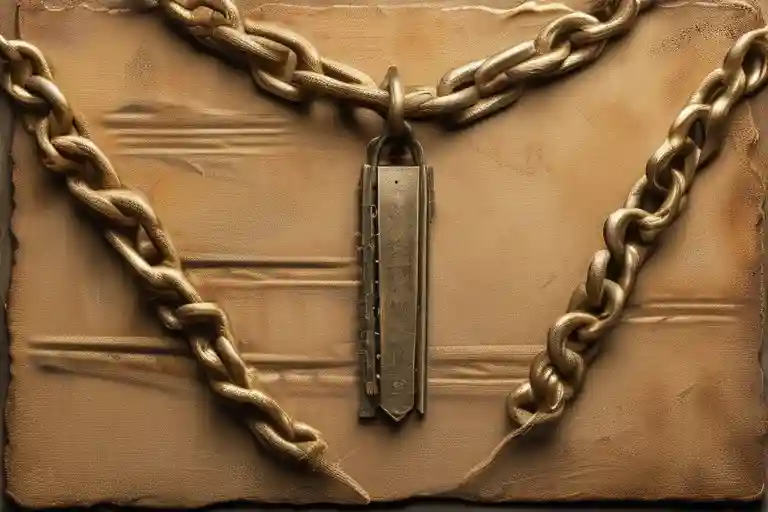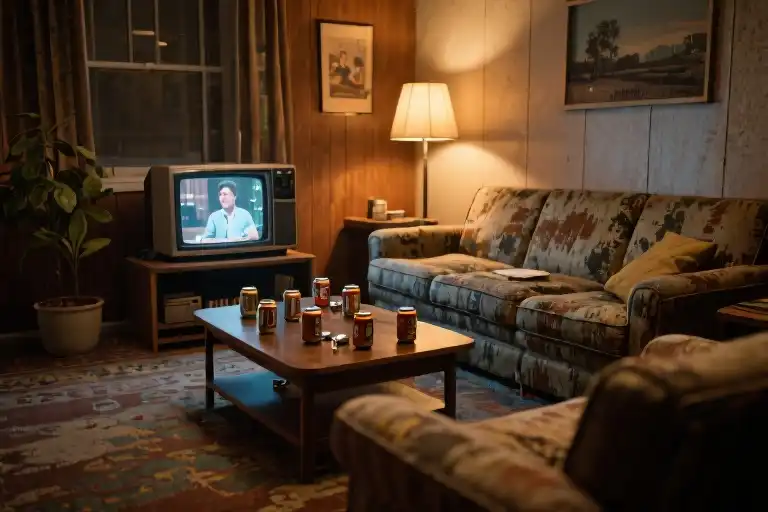The laughter came before I could stop it – a sharp, nervous burst of sound when Tommy Wilkins said he wanted to take me to the movies. My twelve-year-old hands clutched the edge of the lunch table as I forced a smirk. “Good one,” I said, already constructing the narrative where this was all just a cruel joke at the fat girl’s expense. Better to beat them to the punchline.
His eyebrows knitted together in that way boys do when they genuinely don’t understand. “Why is that funny? I just told you I like you.”
The plastic fork bent in my grip. “You can’t like me. I’m not skinny.” As if those three words contained my entire worth as a human being. The cafeteria noise faded into a dull roar as I waited for his confirmation, for the inevitable backtracking that would confirm what every magazine cover and TV show had taught me – that desire had measurements, and I didn’t fit them.
This was 2001, when girl power anthems played over fashion runways showcasing models with collarbones sharp enough to cut glass. That same year, US Weekly would dub Jessica Simpson “Jumbo Jessica” for daring to exist in high-wise jeans without visible hip bones. We called it “heroin chic” without a trace of irony, this cultural worship of emaciation that turned starvation into an aesthetic.
I didn’t know then that my reflexive self-rejection mirrored millions of girls performing the same calculations. That our collective shrinking wasn’t personal failure but something far more systemic – the logical outcome of dolls with 36-inch forms sharing toy aisles with real children, of teen magazines listing calorie counts next to makeup tips, of entire industries profiting from our dissatisfaction.
The question isn’t why I laughed when a boy found me desirable. The real mystery is how we all learned to measure ourselves against impossible standards before we’d even grown into our adult teeth. That Christmas morning when I unwrapped My Size Barbie, her plastic limbs longer than my seven-year-old thighs, nobody told me she wasn’t a blueprint. The lesson seeped in anyway, silent as the airbrushing on the magazine racks at the grocery store checkout.
We carry these early lessons in our bodies like phantom limbs. Two decades later, I can still feel the cold plastic of that doll’s waist under my fingers, still hear the cafeteria laughter that wasn’t really there. The numbers change – 36 inches becomes 24 becomes whatever arbitrary measurement TikTok invents next – but the tape measure around our self-worth remains.
Plastic Measurements of Childhood
The My Size Barbie arrived under the Christmas tree when I was seven, wrapped in shiny paper that reflected the colored lights. She stood exactly 36 inches tall – a fact I knew because the box proudly proclaimed it in bold letters next to her smiling face. At the time, I stood 45 inches in socks. The math didn’t occur to me then, that this ‘life-sized’ doll represented some impossible fractional version of womanhood scaled down for children’s hands.
Her plastic limbs felt cold and smooth when I first pulled her from the packaging, the texture somehow wrong compared to the warmth of human skin. The pink tutu dress included in the box barely stretched over my own shoulders when I tried it on, though the packaging showed two laughing girls sharing the garment. That first failed attempt at wearing the costume left red marks on my skin where the seams dug in, physical proof of some unspoken failure to meet expectations.
Schoolyard mythology compounded the measurements. By fourth grade, we’d all heard about the ‘thigh gap’ – that magical space between legs that supposedly proved you weren’t fat. During PE changing time, girls would stand sideways to the mirror, knees pressed together, judging their reflections against this impossible standard. I remember sucking in my stomach until it ached, convinced the quarter-inch space between my knees wasn’t enough. Nobody explained that bone structure determined this more than weight, or that most adult women’s thighs touch.
The Barbie’s waist circumference (11.5 inches, I later learned) became an unspoken benchmark. When my cousin and I played with our dolls, we’d wrap hands around their midsections, fingers overlapping. We’d then try the same on ourselves, confused when our hands didn’t meet. The disconnect between toy proportions and growing bodies planted early seeds of doubt – if this was ‘my size,’ why didn’t I match?
Looking back, the genius of these childhood measurements was their seeming objectivity. Numbers don’t lie, we’re taught. But nobody mentioned that the rulers themselves were crooked, that the tape measures had invisible weights attached. A 36-inch doll isn’t just a toy – it’s a blueprint, a promise of what you should grow into. When reality doesn’t match the schematic, you assume the fault lies in your own construction.
Those plastic limbs still haunt my mental self-image decades later. The exact shade of that pink tutu appears in dreams sometimes, always just out of reach, always slightly too small. I wonder if the designers ever considered what happened when little girls outgrew their ‘my size’ toys but kept trying to fit the mold.
The Assembly Line of Hunger Aesthetics
The term ‘heroin chic’ wasn’t just a fashion descriptor—it was a diagnosis. Like some twisted epidemiological report, the late 90s to early 2000s saw an outbreak of hollow cheekbones and visible collarbones, with the most coveted symptom being that vacant, just-survived-a-flu look. Designers and magazine editors acted as patient zero, spreading this aesthetic virus through every media channel available.
I still remember flipping through the September 2001 issue of Seventeen magazine, fingers leaving sweat marks on the pages of their infamous ‘Before & After’ makeover section. The transformation always followed the same clinical protocol: take a perfectly healthy-looking girl, slap a ‘Before’ label on her photo, then show her ‘After’ version with three fewer visible chins and significantly less joy. The captions read like medical charts: ‘5’4\”, 128lbs → 118lbs in just six weeks!’ Never mind that the original weight fell well within healthy BMI ranges—the message was clear: your normal is their emergency.
The rhetorical strategies in these magazines would make any propaganda minister proud. They weaponized concern (‘We just want you to be your best self!’), disguised prescriptions as choices (‘Try these 10 easy swaps!’), and most insidiously, framed starvation as empowerment. When Jessica Simpson—a size 4 at her heaviest—got labeled ‘Jumbo Jessica,’ we didn’t question the absurdity. We internalized the grading system: if she’s failing at a size 4, what hope do the rest of us have?
Fast forward twenty years, and the covers of Cosmopolitan tell a fascinating story of shifting beauty standards. The 2003 issues featured women whose waist-to-hip ratios matched 1940s pin-up girls but with 30% less body fat. Today’s covers showcase more diversity in skin tones but still maintain that unspoken size ceiling—the ‘acceptable’ range has maybe expanded by one dress size. The real change isn’t in the models but in the language: where we once had blatant fat-shaming, we now have ‘wellness’ and ‘clean eating’ serving as socially acceptable veneers for the same old restrictions.
What fascinates me most is how these standards didn’t feel imposed at the time. We genuinely believed we’d arrived at these conclusions independently—that wanting to disappear was simply good taste. The magazines merely reflected our desires, never acknowledging they’d planted those desires in the first place. The genius of the system was making us feel like willing participants in our own diminishment.
The assembly line never stopped; it just got smarter. Where Y2K era magazines used blatant body-shaming, today’s influencers package the same messages as #selfcare. The weighing scales got replaced with glucose monitors, but the obsessive self-surveillance remains. Perhaps that’s the most damaging legacy of that era—not the specific beauty standard it promoted, but the infrastructure of self-loathing it built in our minds, ready to accommodate whatever new ideal comes along.
The Daughters of Filters
The ‘pencil challenge’ videos started appearing on my TikTok feed last summer—girls demonstrating how a standard pencil could completely obscure their waistlines when held sideways. At first I scrolled past, then paused when the algorithm showed me a 12-year-old’s version with the caption Day 3 of waist training!! The comments section overflowed with fire emojis and goals.
This isn’t nostalgia. It’s a disturbing reincarnation of the Y2K body ideals that haunted my adolescence, now weaponized through infinite scroll. Where we had Seventeen magazine’s Guess Her Weight quizzes, Gen Z has #WhatIEatInADay videos racking up millions of views. The measuring tape has simply gone digital.
When Disorders Start Before Double Digits
Dr. Naomi Chen’s pediatric clinic reported treating three 9-year-olds for restrictive eating disorders last quarter. They come in clutching fidget toys while describing their ‘safe foods,’ she told me. One patient believed her thighs should ‘leave space for sunlight’—a direct lift from TikTok. The American Academy of Pediatrics now warns that eating disorder hospitalizations for children under 12 rose 119% in the past decade.
What chills me isn’t just the statistics, but the vocabulary. These kids articulate body hatred with clinical precision: I’m doing reverse dieting or My macros are off today. My generation at least had the dignity of struggling in ignorant shame; today’s children perform their suffering as content.
Vintage Aesthetics, Modern Damage
The resurgence of low-rise jeans and ‘heroin chic’ filters should come with surgeon general warnings. Instagram influencers pairing 2000s makeup tutorials with body checking poses create a dangerous feedback loop—what researchers call aesthetic nostalgia. My niece recently asked for a ‘Y2K birthday’ where guests would dress like Bratz dolls. She’s eight.
We used to outgrow Barbie’s proportions. Now algorithms cement those distortions before puberty begins. The same body standards that took years to permeate 1990s teen magazines now colonize young minds in 15-second clips. When I see middle schoolers doing size comparison duets with 2003 Britney Spears concert footage, I want to scream: We fought so you wouldn’t have to!
Yet perhaps the cruelest twist is how social media repackages oppression as empowerment. #Bimbocore celebrates deliberate starvation as a lifestyle choice. #ThatGirl routines glorify obsessive fitness as self-care. The language of liberation gets co-opted to sell the same old cages.
The Mirror Crack’d
There’s fragile hope in the counter-movements blooming—accounts like @bodyautonomykids teaching children to critique ads, or the #GlowUp trend redefining beauty as unfiltered skin. But real change requires interrupting the cycle earlier: toy companies releasing dolls with realistic proportions, schools implementing media literacy before algebra, parents modeling body neutrality before kids learn to hate their reflection.
The girl who laughed at her first date grew up to understand the joke was never on her. Now we owe it to the daughters of filters to rewrite the punchline.
The Rebellion of Imperfection
That moment when you catch yourself sucking in your stomach while alone in an elevator – that’s when you realize how deeply these beauty standards are wired into our nervous systems. The good news? Rewiring is possible. Not through some grand gesture of self-love (let’s be real, that’s exhausting), but through small, daily acts of quiet resistance.
The Five-Minute Body Neutrality Drill
Start with your phone alarm. Not to track calories, but to pause. When it chimes at random intervals:
- Notice without judgment: That dimple on your thigh isn’t ‘good’ or ‘bad’ – it’s just physics at work
- Redirect the script: When you think “My arms look huge,” add “…and they can lift groceries/pets/children”
- Sensory reset: Press your palms against any surface – the texture reminds you bodies exist to experience, not just to be seen
These micro-practices work like cognitive WD-40, slowly loosening the grip of decades worth of media conditioning. I keep mine absurdly simple: on bad days, I literally high-five my reflection. It’s ridiculous enough to short-circuit the negative thought spiral.
#DiversifyOurDolls Toolkit
After my niece asked why her new doll couldn’t have “squishy tummy like Auntie,” I finally understood: representation isn’t about political correctness – it’s about expanding children’s imagination of what’s allowed to exist. Here’s how to demand change:
For consumers:
- Photograph your child playing with diverse-bodied dolls (even if you had to customize them)
- Tag toy companies with #WhereIsMyBodyType
- Support indie creators making anatomicaly realistic dolls
For companies:
- Use actual children’s body scan data for prototypes (shocking concept!)
- Make size-inclusive fashions for existing dolls instead of token “curvy” lines
- Hire fat designers – yes, that’s a specialized skillset
The backlash will come. I still remember the viral outrage over Barbie’s 2016 “body diversity” line – as if giving dolls realistic proportions was somehow corrupting youth. Which, in a way, it is: corrupting the narrow definition of who gets to feel valuable.
Algorithmic Antibodies
Our feeds are still flooded with #fitspo that’s just starvation culture in sports bras. Until platforms take real responsibility, build your own defenses:
- The Three-Question Filter: Before following any fitness account:
- Do they ever eat off-camera?
- Is their “progress” always linear?
- Would their routine be sustainable with a 9-5 job?
- Curate Your Eyeballs: Follow accounts like @bodyposipanda not for inspiration, but for normalization. The goal isn’t to love your body every day – it’s to stop thinking about it constantly.
- Data Poisoning: Intentionally engage with midsize/plus-size fashion content. The algorithm will catch on eventually…probably.
The real work happens in those unglamorous in-between moments – when you choose comfort over contouring, when you delete the calorie app but keep the pizza delivery one, when you measure your worth in laughter lines instead of waistlines. That’s the quiet revolution no Instagram filter can beautify.
The Girl in the Mirror
That twelve-year-old still lives in my reflection sometimes. When I catch her staring back at me with wary eyes, I want to tell her what I know now: the numbers never mattered. Not the inches between thighs, not the digits on tags, certainly not the cruel calculations of seventh-grade boys who’d learned to measure worth in waistlines before they could spell ‘misogyny.’
The irony tastes bitter now – how we internalized those measuring tapes until they became part of our anatomy. I sometimes wonder what would happen if I could time-travel to that playground confrontation. Would I shake my younger self by the shoulders? Whisper that her body wasn’t the punchline to anyone’s joke? Or just sit quietly beside her in solidarity, letting the weight of that unspoken grief bridge the years between us?
Social media tells us we’ve progressed. The #BodyPositivity movement floods our feeds, yet the algorithms still push ‘what I eat in a day’ videos to thirteen-year-olds. We’ve traded heroin chic for waist trainers, thigh gaps for ribcage challenges. The rulers changed shape, but the measuring continues. That’s why I’m starting the #TearTheTagChallenge – not another performative self-love trend, but deliberate acts of resistance:
- Cutting size labels out of clothes
- Taking mirror selfies with measuring tapes in the trash
- Rewriting childhood memories in the margins of old journals
This isn’t about erasing the past, but refusing to let it dictate our present. Those Y2K beauty standards left scars, but scars imply survival. When I see mothers today letting their daughters play with realistically proportioned dolls, when Gen Z creators mock the absurdity of 2000s tabloids, when stores finally stock jeans labeled by actual waist measurements rather than arbitrary numbers – I recognize these as quiet revolutions.
So I’ll ask you what I ask myself whenever that critical inner child resurfaces: How old were you when you first believed your body needed fixing? Not to dwell in that memory, but to acknowledge how early the conditioning began. There’s power in naming what happened to us, if only so we can finally stop happening to ourselves.
Maybe healing looks like this: Not a triumphant before-and-after transformation, but the daily practice of leaving the measuring tape in the drawer. Not erasing that playground memory, but finally hearing my own laughter as what it truly was – not mockery, but the first unconscious protest against a system that wanted us small in every sense. That girl knew instinctively what took me decades to articulate: Any world that requires your shrinkage doesn’t deserve your presence.





